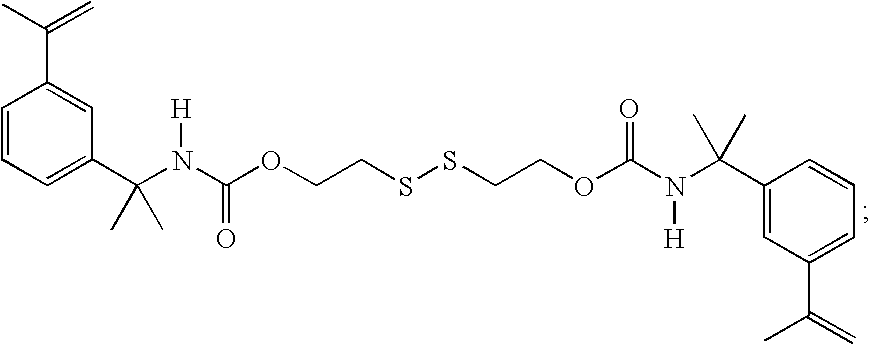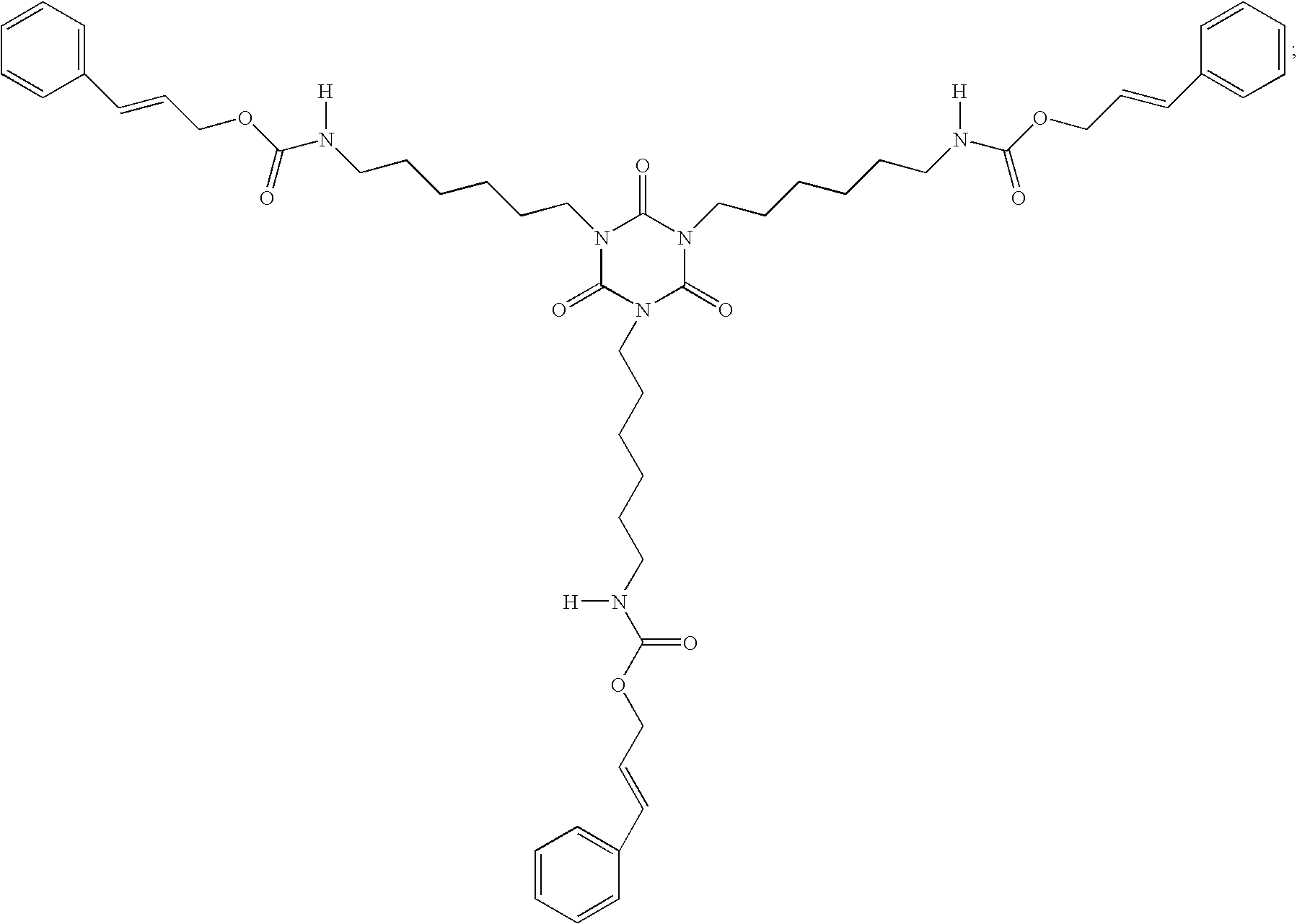Thermoset adhesive films
a technology of thermoset adhesive and film, which is applied in the direction of film/film adhesive, non-macromolecular adhesive additive, adhesive type, etc., can solve the problems of the least efficient step in the total assembly manufacturing process of wirebonded integrated circuit packages, the ultimate latency of epoxy adhesives, and the speed of cure for these compositions
- Summary
- Abstract
- Description
- Claims
- Application Information
AI Technical Summary
Benefits of technology
Problems solved by technology
Method used
Image
Examples
example 1
[0027] This example discloses a butadiene / acrylo-nitrile base polymer containing pendant acrylate (electron acceptor) functionality.
where x=50, y=5, n=310, p=678, and q=59, based on GPC and NMR analysis (one skilled in the art will recognize that these values may vary slightly due to the polymeric character of the material).
[0028] Carboxylated butadiene / acrylonitrile polymer (50.6 g) (Nipol 1072 from Zeon Chemicals) was solvated in 4-methyl-2-pentanone (MIBK, 250 mL) in a 500 mL four-necked flask equipped with a mechanical stirrer, condenser and drying tube. Glycidyl methacrylate (9.78 g) and tetrabutylphosphonium acetate solution (0.58 g) (TBPAAC, catalyst, 70% by weight of tetrabutylphosphonium acid acetate in methanol from Morton International, Inc.) were added to the mixture with stirring. The mixture was heated to 110° C. and held at that temperature for approximately twelve hours. The final product has a viscosity of 4870 mPa·s at ambient temperature and according to titra...
example 2
[0029] This example discloses a butadiene / acrylonitrile base polymer with pendant styrenic (electron donor) functionality,
where x=56, y=16, n=401, p=877, and q=76 based on GPC and NMR analysis (one skilled in the art will recognize that these values may vary slightly due to the polymeric character of the material).
[0030] Carboxylated butadiene / acrylonitrile polymer (38.0 g) (Nipol 1072 from Zeon Chemicals) was solvated in 4-methyl-2-pentanone (MIBK, 255 mL) in a 500 mL four-necked flask equipped with a mechanical stirrer, condenser and drying tube. Isoeugenol glycidyl ether (11.43 g) and tetrabutyl-phosphonium acetate solution (0.62 g) (TBPAAC, catalyst, 70% by wetight of tetrabutylphosphonium acid acetate in methanol from Morton International, Inc.) were added into the mixture with stirring. The mixture was heated to 110° C. and held at that temperature for approximately fourteen hours. According to titration results of the residual carboxylic acid of the modified Nipol rubber,...
example 3
[0031] This example discloses a butadiene / acrylonitrile base polymer with pendant styrenic (electron donor) functionality,
where x=49, y=7, n=310, p=739, and q=59 based on GPC and NMR analysis (one skilled in the art will recognize that these values may vary slightly due to the polymeric character of the material).
[0032] Carboxylated butadiene / acrylonitrile polymer (53.8 g) (Nipol 1072 from Zeon Chemicals) was solvated in 4-methyl-2-pentanone (MIBK, 360 mL) in a 1 L four-necked flask equipped with a mechanical stirrer, condenser and drying tube. Glycidyl N-(3-isopropenyl-α,α-dimethylbenzyl) carbamate (14.8 g) and tetrabutylphosphonium acetate solution (0.54 g) (TBPAAC, catalyst) were added into the mixture with stirring. The mixture was heated to 105° C. and held at that temperature for approximately fifteen hours. The final product has a viscosity of 2000 mPa·s at ambient temperature and according to titration results, the carboxyl conversion is about 88%. According to GPC analy...
PUM
| Property | Measurement | Unit |
|---|---|---|
| temperature | aaaaa | aaaaa |
| Tg | aaaaa | aaaaa |
| Tg | aaaaa | aaaaa |
Abstract
Description
Claims
Application Information
 Login to View More
Login to View More - R&D
- Intellectual Property
- Life Sciences
- Materials
- Tech Scout
- Unparalleled Data Quality
- Higher Quality Content
- 60% Fewer Hallucinations
Browse by: Latest US Patents, China's latest patents, Technical Efficacy Thesaurus, Application Domain, Technology Topic, Popular Technical Reports.
© 2025 PatSnap. All rights reserved.Legal|Privacy policy|Modern Slavery Act Transparency Statement|Sitemap|About US| Contact US: help@patsnap.com



